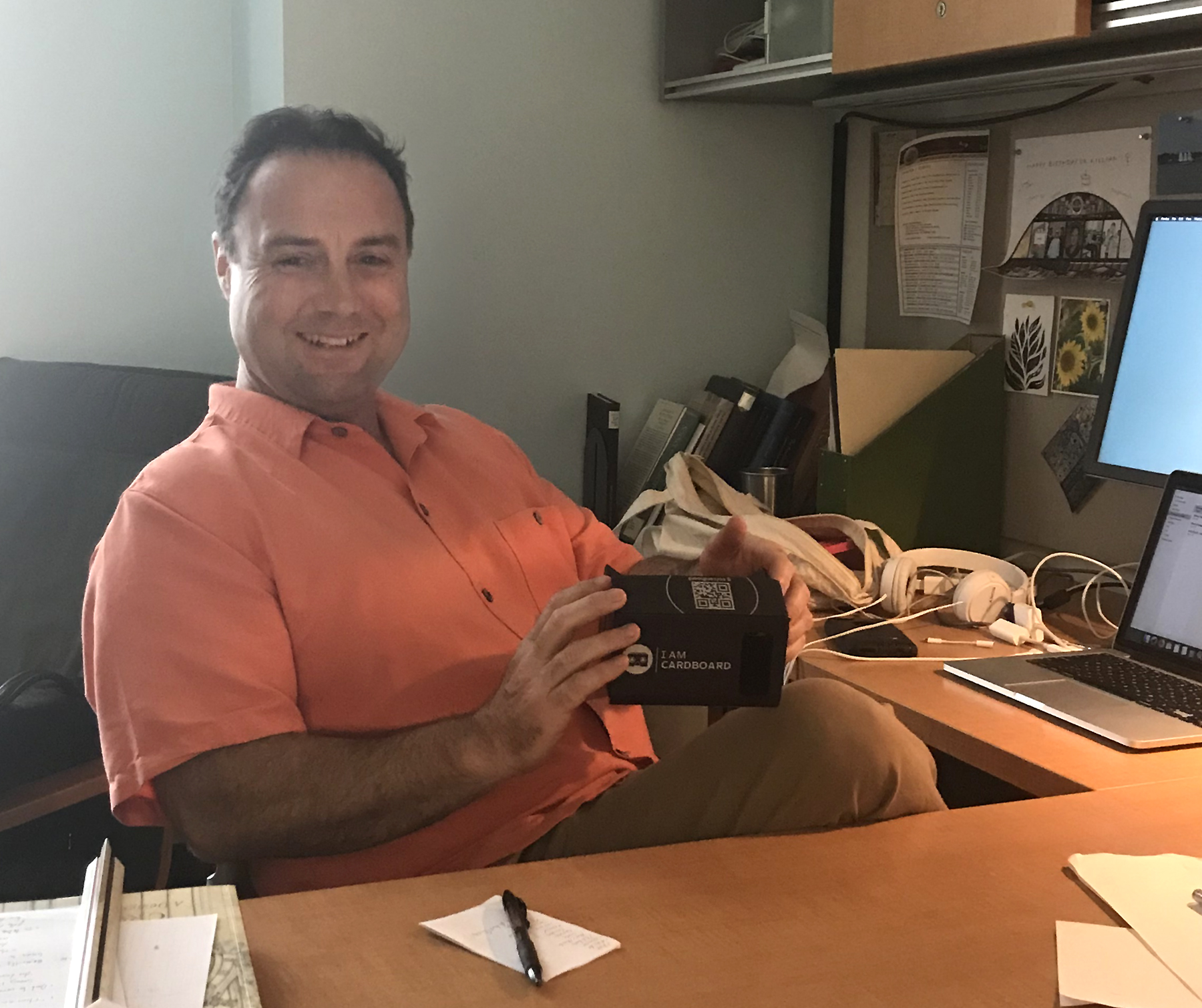Virtual Reality Goggles in the Art History Classroom?
Student Authors: Bridge Wilson and Kellie Antonowicz
 According to a 2015 National Endowment for the Arts survey, art museum and cultural event attendance has steadily declined over the past two decades as people turn more frequently to the Internet to fulfill their cultural needs. In response to this shift, art museums have begun to incorporate virtual technology in efforts to engage the public, from interactive website tours to on-site devices that augment visitors’ experiences. Aside from the importance of such adaptations for museum survival, the trend begs the question: Should VR technology be introduced into the art history classroom?
According to a 2015 National Endowment for the Arts survey, art museum and cultural event attendance has steadily declined over the past two decades as people turn more frequently to the Internet to fulfill their cultural needs. In response to this shift, art museums have begun to incorporate virtual technology in efforts to engage the public, from interactive website tours to on-site devices that augment visitors’ experiences. Aside from the importance of such adaptations for museum survival, the trend begs the question: Should VR technology be introduced into the art history classroom?
One device with pedagogical potential is Google Cardboard from Google VR. This inexpensive device offers the purely visual aspect of virtual reality: creating an illusion of depth by providing a separate image for each eye and isolating the vision from external distractions. For as little as $5.71, buyers can purchase these goggles for use with accompanying smartphone apps to “visit” destinations ranging from the Sistine Chapel to a snowy mountain landscape. Students from Jean Hudson‘s Information Technology for Art Historians class experimented with VR googles from Google Cardboard and shared their findings with Professor Kyle Killian, seeking his opinion on the use of this technology for art history instruction. Dr. Killian developed the department’s online liberal studies course, Art, Architecture, and Artistic Vision. As a specialist in archaeology, architectural history, and cultural heritage studies, he is interested in using new technologies to investigate architectural and archaeological sites.
 Dr. Killian is enthusiastic about technologies that enhance a viewer’s in-person experience with sites and objects, but less impressed with tools designed to replicate or replace the museum visit – or the classroom lecture. He points out that Google Cardboard, while inexpensive, still requires smart phone accessibility; although the VR headset costs under ten dollars, the price of a smartphone is much higher, and he questions the assumption that every student can afford one. Dr. Killian also notes that currently available VR images fall short of the implied sense of being “in the space.” Viewed through Google Cardboard, 3D vistas tend to be distorted, blurry, and inconsistent in both quality and quantity. Like digital images competing with 35mm slides twenty years ago, the current stock of VR images simply does not yet offer a viable alternative for classroom use. Today’s student cannot fathom an art history class without digital images. As the technology improves, the next generation may well be equally familiar with virtual reality.
Dr. Killian is enthusiastic about technologies that enhance a viewer’s in-person experience with sites and objects, but less impressed with tools designed to replicate or replace the museum visit – or the classroom lecture. He points out that Google Cardboard, while inexpensive, still requires smart phone accessibility; although the VR headset costs under ten dollars, the price of a smartphone is much higher, and he questions the assumption that every student can afford one. Dr. Killian also notes that currently available VR images fall short of the implied sense of being “in the space.” Viewed through Google Cardboard, 3D vistas tend to be distorted, blurry, and inconsistent in both quality and quantity. Like digital images competing with 35mm slides twenty years ago, the current stock of VR images simply does not yet offer a viable alternative for classroom use. Today’s student cannot fathom an art history class without digital images. As the technology improves, the next generation may well be equally familiar with virtual reality.
Dr. Killian does envision one valuable classroom use for Google Cardboard in its present state: creating and sharing virtual exhibitions. “I can see this being a very nice and inexpensive way of augmenting limited gallery space.” Working with 3D images can also help prepare Museum and Cultural Heritage Studies students for museum careers. As museums increasingly rely on new tools that augment the way visitors experience their objects, and as the inventory of useful virtual imagery expands, it is crucial for art history students to experiment with new technologies.
Further Reading:
Art History Teaching Resources: Virtual Reality in the Art History Classroom